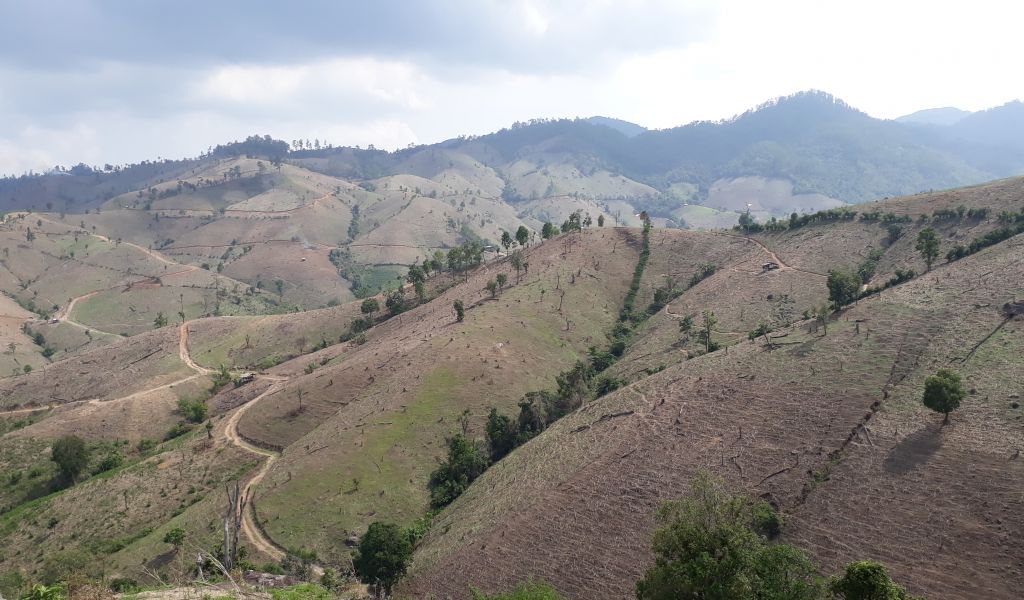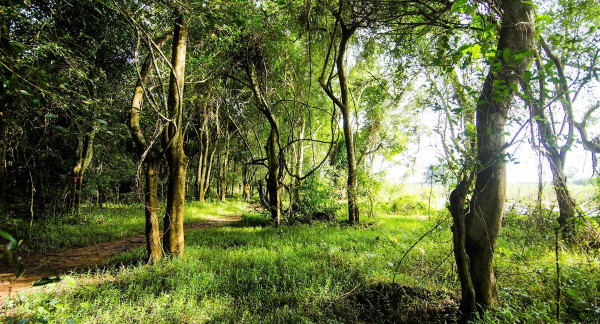Under RECOFTC's new project, partnership will FLOURISH

Contrary to what is often discussed on the surface, forest landscape restoration (FLR) is not simply about planting trees. And although global deforestation and forest degradation is a disturbing trend, capturing pessimistic thoughts in the form of doom-filled media titles, there are those who recognize our collective ability to address environmental, social and ecological challenges. That is why FLR has gained such traction; and this is why the forest community needs to provide insight on the additional benefits FLR provides us all, outside of simply planting trees. Let’s explore this more.
Firstly, it is important to note that there are certain global commitments that reflect a desire to address land and forest degradation:

FLR is in an integral position to assist in the realization of these global commitments and is promoted widely as one of the key solutions to restoring and increasing forest cover. The benefit of FLR, however, lies in its holistic approach to landscape management, thus creating holistic impacts. Not only does it address the challenges of climate change mitigation and adaptation, but it does so while also supporting forest dependent communities’ and indigenous peoples’ livelihoods and water security. This reinforces and strengthens sound management practices while simultaneously engaging in soil conservation and protection.
So, as previously stated, FLR goes way beyond simply planting trees:FLR is a dynamic and ongoing process that in its fullest sense restores the ecological functionality of the landscape, enhances the landscapes productivity and biodiversity, and consequently supports ecosystem services and promotes a system of multiple co-benefits. FLR accomplishes this by considering land management as a dialogue that includes a wide range of stakeholders who all have a direct interest in restoring functionality.
However, despite this diverse range of potential functionality, the focus of FLR has largely remained on the narrow and technical aspects of restoration. Other associated aspects, such as governance, participation of practitioners and other key stakeholders, the use of traditional knowledge by local communities and indigenous peoples, tenure security and associated challenges are yet to be fully understood. Therefore, when not considering and integrating these aspects sufficiently, the promises FLR holds may not be achieved.

Understanding the potential impact, RECOFTC - The Center for People and Forests has taken a number of steps to mainstream FLR into its programmatic approach by considering all of FLR’s associated aspects. Besides organizing regional consultations that involved private sector actors in discussing FLR finance approaches in the ASEAN region, RECOFTC has also developed capacity support for an integrated FLR approach. RECOFTC realizes, however, that this is not enough and has recently sought out more effective means of implementing FLR. This is why the Center is about to initiate the ‘Production-Driven Forest Landscape Restoration through private sector-community partnership’, funded by the Federal Ministry for the Environment, Nature Conservation, and Nuclear Energy (BMU) of Germany, under the International Climate Initiative (IKI). The project will run for four years (May 2018-April 2022).
The overall goal of the project is to “Enhance climate change mitigation and adaptation potential of forests in Greater Mekong Subregion (GMS) countries through innovative and production-driven forest landscape restoration (FLR)”. The initiative, also termed as FLOURISH will address tenure rights and governance issues when striving for FLR. In so doing, the project will result in enhanced climate change mitigation, adaptation and biodiversity conservation in in selected forested landscapes in Lao PDR, Thailand and Viet Nam. FLOURISH is strategically aligned with national priorities and plans of the project focal countries, which will allow FLOURISH to continuously build on the experiences in the forest landscapes and stimulate for cross learning throughout all integrated actors in the GMS.
In one of its pilots, which aims to mitigate the impacts of climate change, FLOURISH is considering to support processes aimed at replacing conventional cooking fuel (LPG and fossil fuel) with forest biomass-based pellets. This replacement strategy aims to increase carbon storage through permanent tree cover through the strengthening of bamboo and wood products value chains,providing the incentives for sustainably managing forests. In terms of climate change adaptation, FLOURISH seeks to reduce forest fires by engaging local landscape communities in increasing their efficiency in the harvesting and commercialization of timber and non-timber forest products through community-private sector partnerships. Biodiversity conservation will FLOURISH as well by applying the FLR-approach, aimed at ensuring habitat contiguity of critical conservation areas in the three landscapes.
Overall, what stands out in FLOURISH is that its success will come from sustained community-private sector partnerships, while simultaneously addressing climate change, biodiversity and livelihoods interests.
FLOURISH is managed by RECOFTC with support from the following implementing partners: the International Network of Bamboo and Rattan (INBAR) based in Beijing, the Institute of International Forestry and Forest Products of Technische University Dresden (TUD) and Nan Community College (NCC) based in Thailand.

